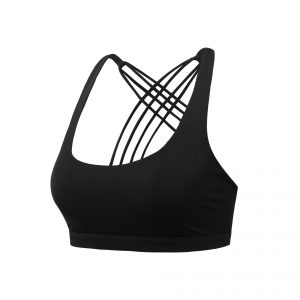British sports equipment expert Melissa Coulter said that due to gravity, the height of the nipple will decrease by 1 to 2 cm in the 30s. Without the support of a sports bra, breast pain or sagging is more likely to occur.
A collaborative study between Kurt and the University of Portsmouth in the United Kingdom found that among the underwear materials, the more Lycra, the greater the stretch and the less support. Ordinary bras have more Lycra fabric, which makes them easier to stretch and feel comfortable to wear. Sports bras have limited stretch, which can prevent breasts from “running freely.”
Ordinary bras with strong elasticity are only suitable for low-impact sports such as yoga, while in high-impact sports such as running and playing ball, the breasts will move in a “8” shape, and the unsupported breasts can move up and down up to 12 cm. At this time, a sports bra with limited stretch can provide the necessary support to prevent breast injury. Researchers found that ordinary bras can reduce breast displacement by 38%, while sports underwear can reduce it by 78%.
Kurt said that the main material of the sports bra is high-performance fabric, which has better air permeability, moisture absorption and perspiration, and can reduce the irritation of sweat to the skin. In addition, sports bras have wider straps and thicker pads, which can reduce the impact on the shoulders. The hooks, buttonholes and the bottom line of the bra are also lined to reduce skin friction. Some sports bras even eliminate the seams in the cups, so even running a marathon will not stimulate the nipples.








